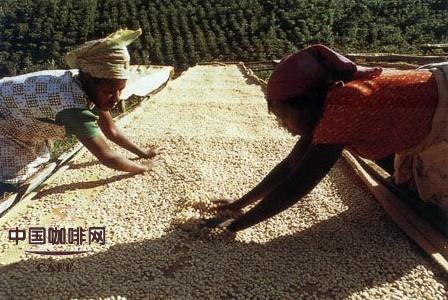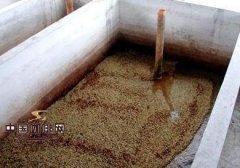The treatment of coffee beans by sun-drying

After the wet treatment, the coffee beans are still preserved in the inner pericarp, which still contains about 15% water. The endocarp must be dried to a moisture content of about 11% to ensure that coffee beans are stored in a stable and safe environment. Water content is critical, because if Arabica beans are overdried to a moisture content of 10%, they will lose their original turquoise and their quality will decline.
Coffee beans covered with endocarp should be laid flat on the cement floor, slate floor, dry table or plate, which is very similar to the drying method.
Mechanical dryers are sometimes used on larger plantations or where Rain Water may disrupt the drying process. Coffee beans are placed in an air-conditioning box and the dry wind blows on the surface of the coffee beans. The drying process can also be done by the sun, and coffee beans should be turned regularly to ensure complete dryness, a process that takes 12 to 15 days. The most important thing is that the endocarp should not be cracked. If the sun is too strong, the coffee beans must be covered.
At this point, the whole process is completed, coffee beans become known as "parchment coffee beans (parchment coffee)" (because the endocarp of coffee beans is quite like parchment, it is called). In general, coffee beans are kept in this form until the eve of export.
Since countries that produce coffee beans need to export coffee beans throughout the year rather than just about three months of harvest, coffee beans should be stored in the form of "parchment coffee beans" in an absolutely stable environment. High temperature is the enemy of coffee beans, and it is easy to damage coffee beans when the humidity reaches 70%. For this reason, "parchment coffee beans" are generally not stored on farms where they are produced (although there is no choice in some places). Coffee beans grown in the highlands should be stored at or near the same altitude as the places where they are grown, as they are particularly vulnerable to humidity. In this environment, Arabica coffee beans should not be stored for more than 12 hours, while Robbins coffee beans can be stored for a little longer.
Important Notice :
前街咖啡 FrontStreet Coffee has moved to new addredd:
FrontStreet Coffee Address: 315,Donghua East Road,GuangZhou
Tel:020 38364473
- Prev

Treatment of Coffee Fruit by semi-washing
Not all producing areas can use the Brazilian half-sun method. If the producing area with heavy moisture is allowed to take out the pectin pods and expose them outdoors, it is not only not easy to be dehydrated and hard, but also easy to parasitize molds. Therefore, mechanical semi-washing has been developed in areas with heavy humidity, which saves both labor and water. First, move the red fruit and the half-green and half-red fruit into the pulp sieving machine to get the sticky fruit.
- Next

The harvest and processing process of coffee beans and two basic processing methods
Picking: due to climatic differences, the harvest season is usually from September to March in the Northern Hemisphere and from April to August in the Southern Hemisphere. When the coffee beans are ripe, they can be picked. In many alpine slopes, coffee must be picked manually. In relatively flat producing areas such as Brazil, Australia and Hawaii, they can be picked by machines. These two methods
Related
- What is the meaning of lactic acid fermentation with coffee bean treatment?
- How to judge the state of foam by sound?
- How does the latte pull out the unicorn pattern? Come to get for a little trick to improve the flower pull!
- Will flower pulling affect the taste of the latte?
- Do you know the history of coffee?
- The difference between honey treatment and sun washing what is raisin honey treatment?
- What kind of milk can a novice use to make coffee foam to keep the foam longer? The correct method and skills of milking tutorial sharing
- Why do washed coffee beans taste sour? Flavor characteristics of washed Coffee
- Introduction to the skill of how to practice the size and height of water injection around the circle of hand-brewed coffee
- How do beginners practice coffee flower drawing from scratch?

